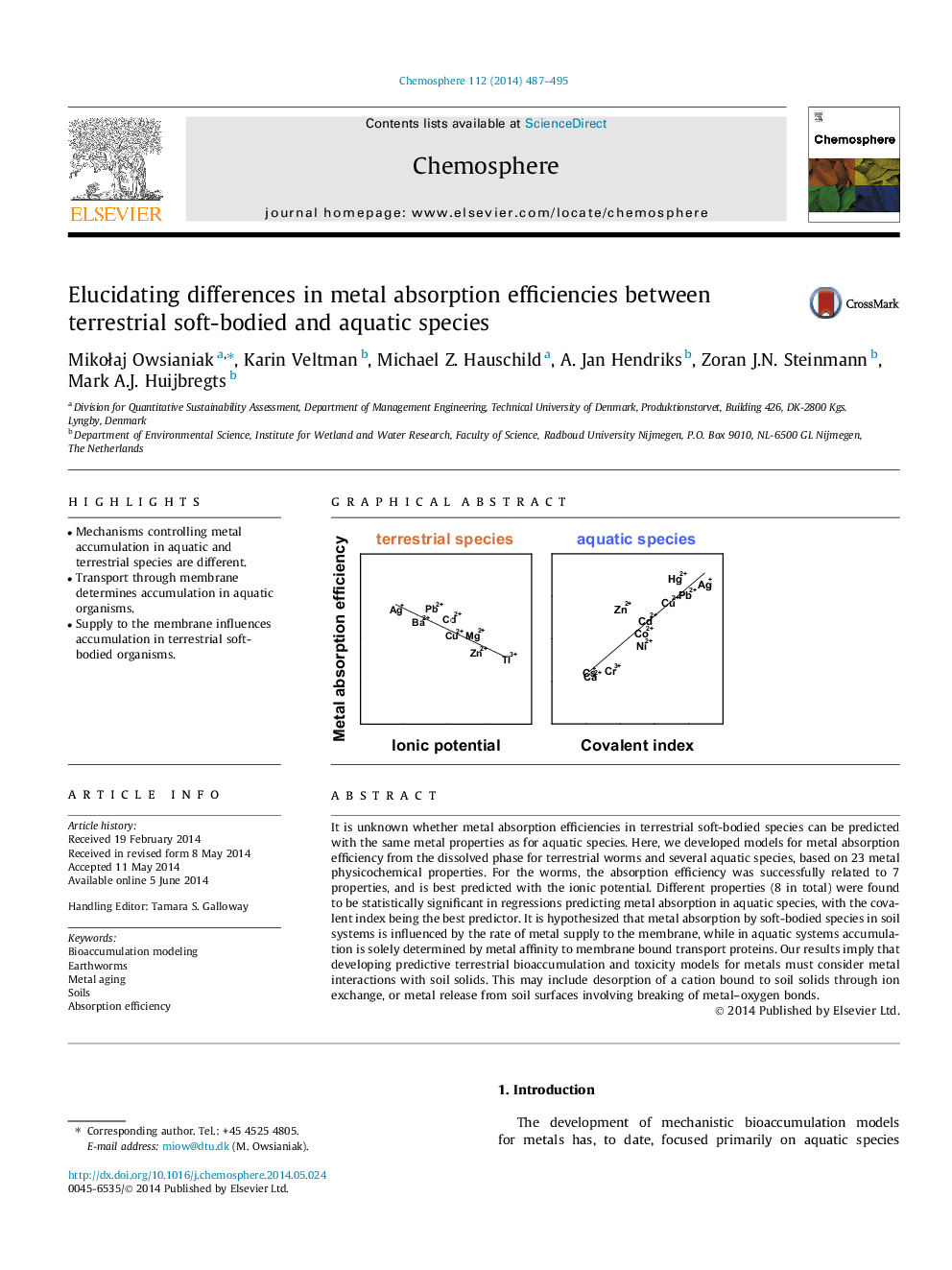| Article ID | Journal | Published Year | Pages | File Type |
|---|---|---|---|---|
| 6308889 | Chemosphere | 2014 | 9 Pages |
â¢Mechanisms controlling metal accumulation in aquatic and terrestrial species are different.â¢Transport through membrane determines accumulation in aquatic organisms.â¢Supply to the membrane influences accumulation in terrestrial soft-bodied organisms.
It is unknown whether metal absorption efficiencies in terrestrial soft-bodied species can be predicted with the same metal properties as for aquatic species. Here, we developed models for metal absorption efficiency from the dissolved phase for terrestrial worms and several aquatic species, based on 23 metal physicochemical properties. For the worms, the absorption efficiency was successfully related to 7 properties, and is best predicted with the ionic potential. Different properties (8 in total) were found to be statistically significant in regressions predicting metal absorption in aquatic species, with the covalent index being the best predictor. It is hypothesized that metal absorption by soft-bodied species in soil systems is influenced by the rate of metal supply to the membrane, while in aquatic systems accumulation is solely determined by metal affinity to membrane bound transport proteins. Our results imply that developing predictive terrestrial bioaccumulation and toxicity models for metals must consider metal interactions with soil solids. This may include desorption of a cation bound to soil solids through ion exchange, or metal release from soil surfaces involving breaking of metal-oxygen bonds.
Graphical abstractDownload full-size image
